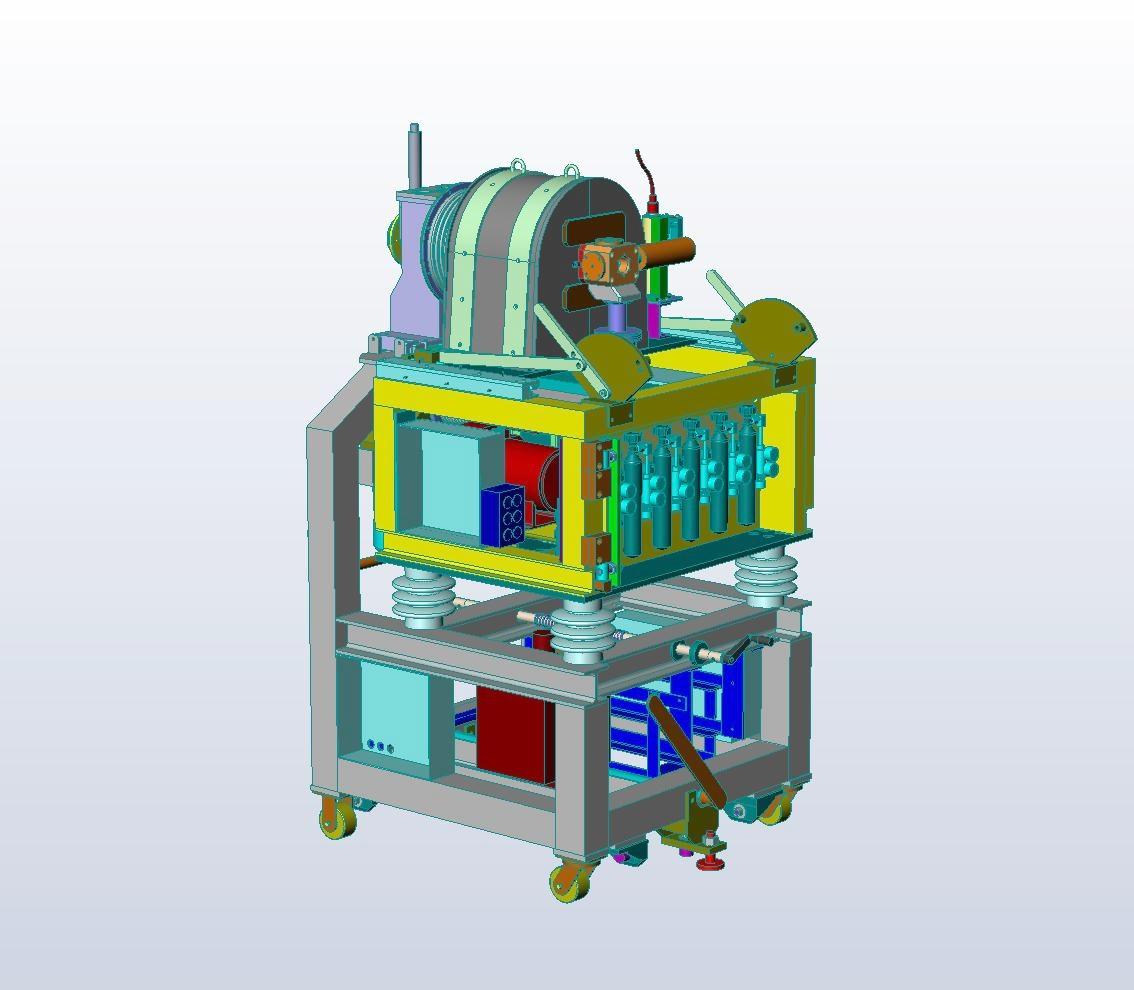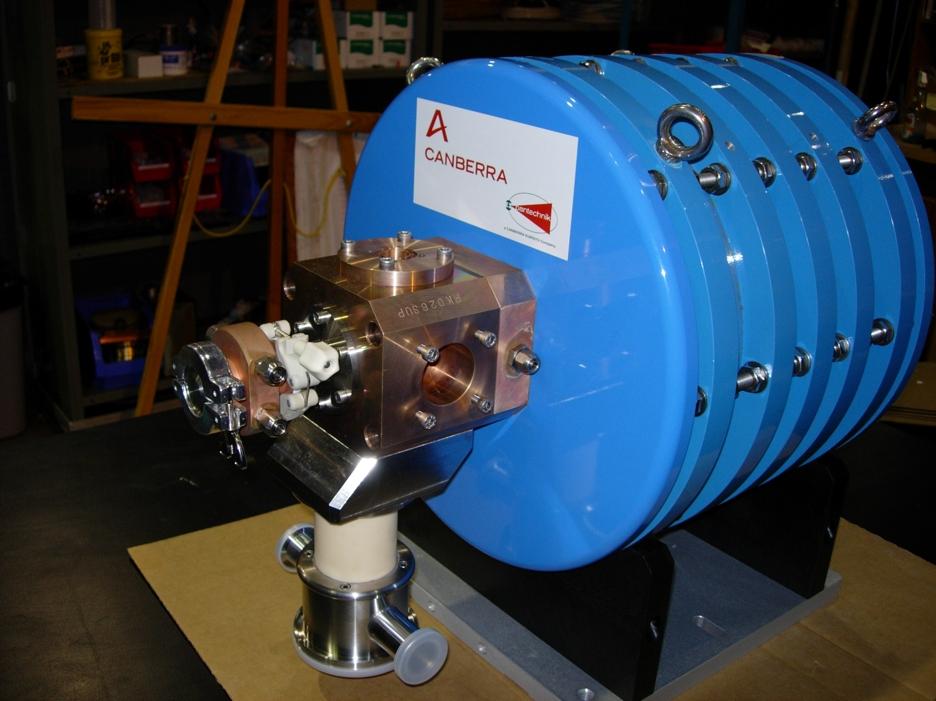Last December, a full complement of multi-charged stable ion beams became available to the TRIUMF Isotope Separation and Acceleration (ISAC) facility through the incorporation of a new multi-charge Supernanogan Electron Cyclotron Resonance (ECR) ion source. The uniqueness of this source is that it employs only permanent magnets to radial and axial plasma confinement and with a fraction of a watt of RF power it can generate highly charged ions with enough intensity for ISAC needs .The source is the third and most recent addition to the ion source family at the OLIS (Off-Line Ion Source) facility. The Supernanogan ion source and the preexisting microwave and surface ion sources play an important role at ISAC facility because they are used to provide pilot beams for accelerator tuning and specific beams for experiments.
The main benefit of incorporating the Supernanogan into the existing OLIS family is that it has the ability to ionize atoms to high charge states, which will facilitate the production of beams of all stable elements for ISAC. According to Dr. Colin Morton, ISAC beam physicist, "To accelerate ions through the ISAC accelerator chain, without further stripping after initial acceleration through RFQ, we need a mass-to-charge ratio near 6. Being able to reach high charge states allows us to accelerate ions of heavier masses while keeping A/q near 6. This allows us to deliver a broader range of beams to users at ISAC, and not just stable beams from OLIS." The Supernanogan ion source will also improve the stable beam delivery by increasing the intensity since it bypasses the stripping foil and eliminates its current and foil life limitations.
 |  |
LEFT: Image of Supernanogan incorporated into the mobile cart design; RIGHT: Supernanogan ECR Ion Source
While testing of the source has been conducted over the last 6 months, it recently successfully sent beam to three scheduled experiments. The DRAGON experiment S1216 ("A direct measurement of the 17O(a,y) 21Ne cross section") has already taken an intense beam of 17O from the Supernanogan and in late June, TACTIC received beam originating from the Supernanogan as 18O2+ which was then stripped to 18O4+. TIGRESS received beam from the Supernanogan in July and DRAGON is scheduled again for early September. To date, the Supernanogan ion source has been used to study 40Ar, 16O, 17O, 18O, 84Kr and has delivered beams of 18O2+, 17O3+ and 40Ar7+ to users in ISAC. "So far, the feedback from end users has been excellent, which is the most important thing," explained Damien Gallop, TRIUMF ion source technician; "the beam is stable and relatively intense, high charge states of a variety of beams have been realized, and start-up of the source has been smooth and can be easily duplicated."
An interesting and unique component of the new Supernanogan ion source is its mobility. Within a few minutes, it can be removed as a module from the OLIS facility and parked in its dedicated service dock. "This ensures", explained Gallop, "that maintenance can be performed on the Supernanogan without interrupting beam delivery from another OLIS ion source." The production of high charge states is also very vacuum sensitive, and being able to remove the source, while remaining under vacuum, from the OLIS cage ensures that maintenance on the other ion sources and any other OLIS activities can be performed without compromising the Supernanogan vacuum.
Geoff Wight, the designer and builder, said, "Although the Supernanogan ion source was a purchased off-the-shelf device, it requires many additional components to function as a member of the OLIS family. The design of the mobile ion source station was a challenge, as the cart's components must be separated into high voltage and ground potential sections, capable of a 30kV potential difference. It also must be remotely controlled, be easily maintained, and also fit into the existing OLIS facility with reproducible accuracy and without affecting the operation of the other ion sources."
Overall the Supernanogan source has exceeded expectations. Damien Gallop described it as a "sweetheart" source to run: "Its low power requirements for excellent beam production are at least as good as expected and early analysis of emittance scans suggest that beam quality is at least as good as other ion sources." Early tune development suggests that the Supernanogan ion source is a comfortable fit into the OLIS environment and its performance characteristics are similar enough to the existing OLIS ion sources that a standard tune for common beamline optics to work with any OLIS source may be achievable.
-- Meghan Magee, Communications Assistant with help from Supernanogan experts Damien Gallop, Geoff Wight, and Keerthi Jayamana
